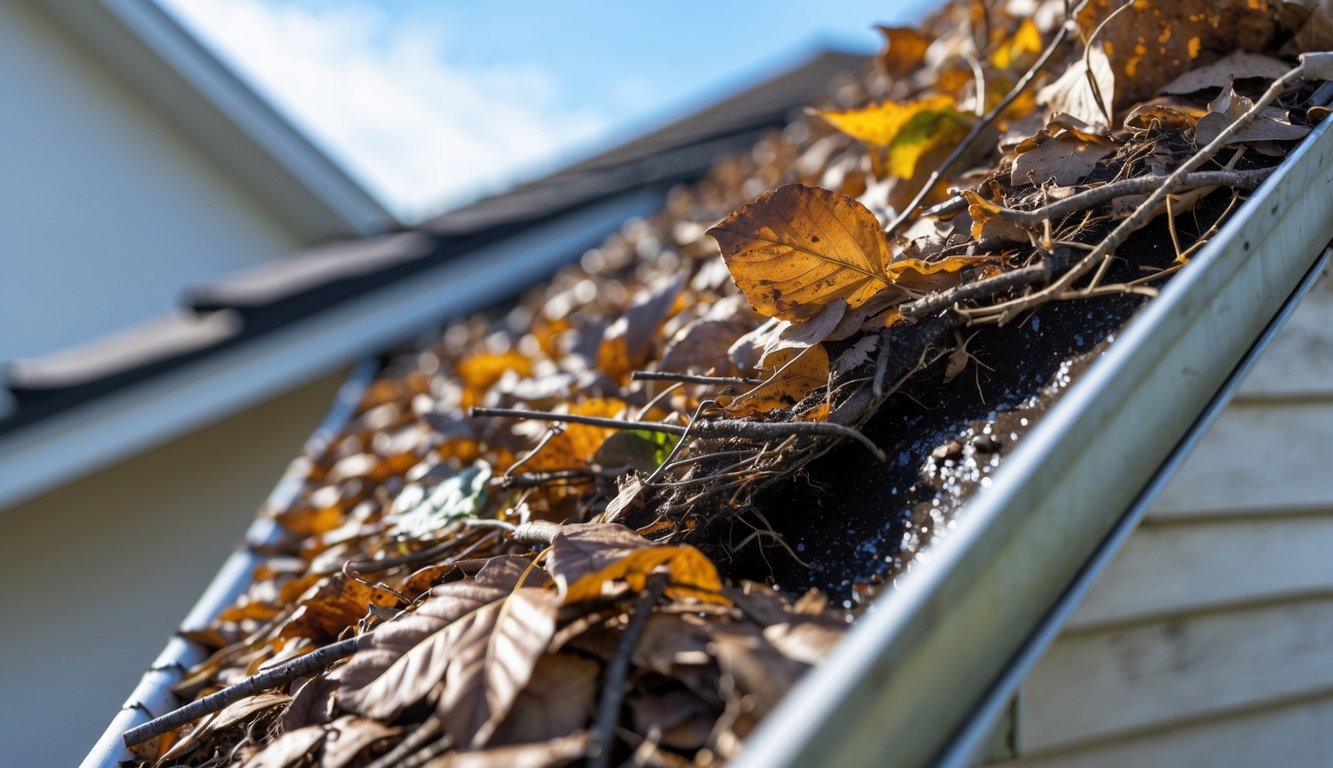
Every spring, I stare at my gutters and just pretend everything’s fine. Classic denial. Then someone in the neighborhood spends a fortune fixing water damage because, surprise, leaves and junk rotted out their fascia or flooded their basement. Ignore clogged gutters and, honestly, you’re probably tossing money down the drain before you even know there’s a leak. Talked to a roofer last April—he grumbled about “hidden water intrusion wrecking foundations” during a storm, and suddenly I’m picturing warped floors and doom-scrolling home repair forums at 2am.
It’s the silence that gets me—nothing seems wrong, then, bam, water’s under the shingles, mold’s creeping behind drywall, and you’re left with a gigantic bill and a mess you don’t even want to look at. I read somewhere (maybe here) that sagging gutters, loaded with leaves, end up channeling water into the house instead of away. It’s like the whole system is designed to betray you when you least expect it. Nobody warns you about this stuff when you buy a house. Pine needles? Apparently my arch nemesis.
Honestly, I think most of us ignore it because cleaning gutters is gross. Who actually enjoys scooping out wet, stinky gunk? But there’s also this fire hazard if you live somewhere dry—never crossed my mind until I read about roof edges turning into kindling. I mean, why isn’t this a bigger deal? Am I the only one who feels like there’s a slow, invisible money leak happening right over my head?
Understanding Gutter Debris Buildup
It’s bizarre—no matter where you live, city, suburbs, middle of nowhere, the debris finds you. Leaves are just the start. Cleaning routines? I guess some people have them, but mine’s more “wait until things overflow and panic.”
Common Types of Gutter Debris
Dead leaves? Sure, everyone expects those. Pine needles, though, are relentless—if you’re near evergreens, good luck. Acorns, twigs, and the black sludge that collects in the corners? That stuff is a bug breeding ground, and I wish I was exaggerating. I’ve seen plastic wrappers up there, too. Wind? Neighbors? Who knows. Pest control folks say clogged gutters attract ants and mice. I laughed until I saw a mouse nest crammed in a downspout elbow.
Last time I cleaned them out, I found dog hair, a crayon, and something gelatinous that honestly looked like it might be alive. Maintenance blogs warn about water repair bills and property damage, but nobody mentions the weird stuff. It’s basically a rooftop ecosystem.
Causes of Buildup in Gutters
Gutter guard commercials act like they’re the cure for everything. They’re not. Wind just dumps more junk in anyway, and if you forget to clean (yep, me every year), you’re toast. The pros I’ve met? They know their clients by name because everyone forgets. Overhanging branches—one storm, instant mess. Pollen clumps? That stuff glues itself in place and never lets go. People blame “bad slope” or “old gutters,” but most of the time, it’s just neglect. By the time you notice, you’ve probably got pests, too—industry warnings say so, and I believe them.
How Seasons Affect Debris Accumulation
Spring’s supposed to be easy, right? Nope. Blossoms and leaf buds fill gutters faster than autumn leaves, at least at my place. Summer storms? They toss up seeds, petals, and whatever else is loose. Autumn’s the classic mess, except evergreens don’t care about seasons. My “cleaning schedule” is basically a joke. Winter’s a whole new problem—wet debris freezes, turns into gutter popsicles, and sometimes bends the metal. By late winter, things are stuck solid, and I’m just hoping nothing’s broken. Every pro says to clean after storms, but let’s be real—I’m usually late and already dealing with repairs.
Why Clogged Gutters Are a Hidden Risk
Yesterday, I tossed leaves off my porch and remembered the water stains that snaked down my living room wall last year. Always the “minor” debris—twigs, silt, gravel—that ends up costing the most. I never see it coming. One day, you’re fine, next day, you’re pricing out drywall repairs and regretting every decision.
Signs Your Gutters Are Clogged
Supposedly, the signs are obvious—overflow, bent seams, puddles by the foundation. I’ve missed every single one until water’s pouring over the edge like a waterfall. If you see weeds or tiny trees up there, it’s already too late. Water’s probably chewing up your siding and fascia. I ignored the little granules by my downspouts once—next thing, the soil’s eroding and the bricks are stained. Gutters don’t come with warning lights. You’ll hear a weird drip, spot sagging, maybe see pests. Termites ate through my friend’s window trim because of a blocked gutter. Wild.
And, mosquitoes? They love stagnant water. My uncle ended up in the hospital from a mosquito infection—turns out, his gutters were a breeding ground. You never notice a clog until it’s a disaster, usually during a storm when you can’t do anything about it. Even a tiny dam inside a downspout can flood your basement. Read more horror stories at The Risks of Clogged Gutters if you want to feel worse.
Silent Damage from Gutter Blockages
Blocked gutters basically weaponize rain against your house. One missed clog, and water sneaks into the roof or behind the walls. Mold shows up before you even smell mildew. Let debris sit, and you’re just inviting termites—constant moisture, rotting wood, easy access. I learned that when gutters overflow, the soil around your foundation shifts. Happened to me. Read about foundation damage and you’ll start having nightmares about your house tilting.
Oh, and fire risk? Last July, a neighbor’s attic almost caught fire after embers landed in packed gutters (fire risk proof). Trapped debris and moisture ruin paint, flood basements, and—here’s the kicker—can get your insurance claim denied for “lack of maintenance.” Still, I forget to check until moss is growing somewhere it shouldn’t.